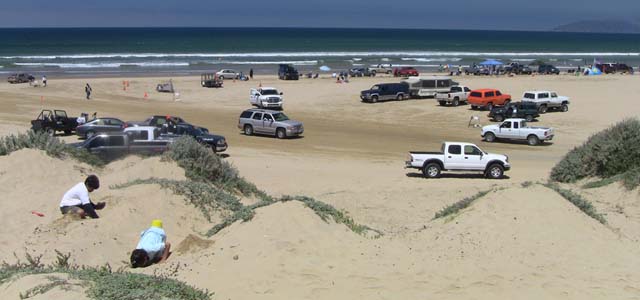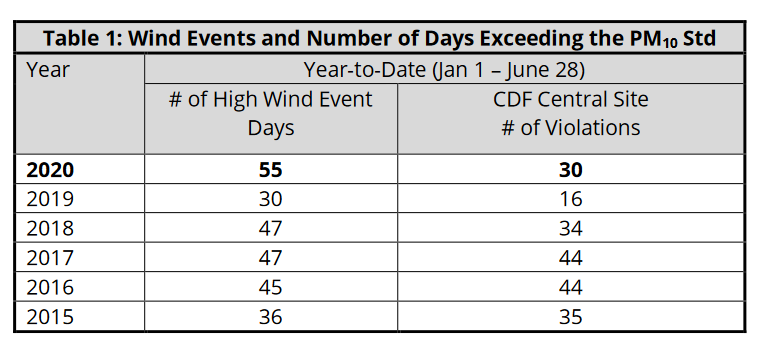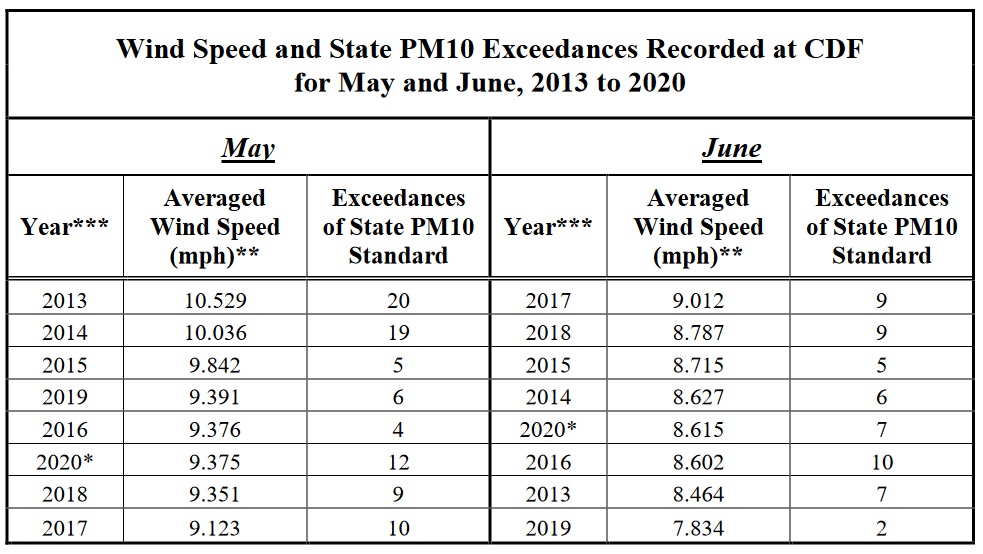Spring at the Oceano Dunes lasts 6 months, according to the APCD
September 22, 2020

By KAREN VELIE
To support their determination that vehicles on the Oceano Dunes are polluting the air on the Nipomo Mesa, scientists affiliated with the San Luis Obispo County Air Pollution Control District (APCD) are now claiming spring lasts from Jan. 1 through June 28. In reality, spring begins on or around March 20th and ends on or around June 20th, coinciding with the spring equinox and the summer solstice.
For more than a decade, the APCD and Nipomo Mesa residents have clashed with state parks and off-road vehicle enthusiasts over the cause of dust in the air at the Nipomo Mesa. While both sides agree strong westerly winds blowing over the sand dunes transport dust to the mesa, scientists disagree if off-road vehicles are the primary culprit.
Then on March 28, California State Parks closed the Oceano Dunes State Vehicular Recreation Area to all off-road and recreational vehicles because of the coronavirus pandemic.
During May 2020, with no vehicles on the dunes, there were more violations of the state’s air quality standards than the month of May during the previous six years, data from two Nipomo Mesa air quality monitoring sites show.
May is typically the windiest month in south San Luis Obispo County, and in May 2020, wind speeds were average when compared to the previous five years.
In a June 30 APCD rebuttal, the APCD blamed higher than average spring winds for the increase in violations while vehicles where banned from the Oceano Dunes.
“In simple terms, it was a very windy spring,”according to the APCD rebuttal. “2020 is by far the windiest of the last six years, while 2019 was the least windy.”
To support their assertion, the APCD provided the following graph of wind speeds, listing six months:

On behalf of State Parks, the California Geological Survey’s Senior Engineering Geologist Will Harris refuted the APCD’s rebuttal. Harris indicated the APCD failed to address wind speeds in May when there were no vehicles on the dunes, and instead represented Jan. through the end of June as spring, according to his Aug. 5 memorandum.
“The comparison does not represent ‘a very windy spring’ since the comparison uses data from January, February, and the first half of March,” according to Harris. “In other words, the first half of 2020 may indeed be the windiest half-year of the last six years, but that does not necessarily mean May 2020 has been the windiest May of the last six years.”
Harris researched the number of PM10 exceedances and wind speeds during the past eight years for the months of May and June, and determined excessive dust days have increased after RVs and off-road vehicles were barred from the Oceano Dunes.

“The APCD analysis to determine the strength of spring winds year to year as a means to explain PM10 exceedances in 2020 incorporates data from months that are not in spring (January, February, the first half of March), and does not consider the specific months in 2020 when there was no OHV recreation occurring in the dunes,” Harris wrote.
An Analysis: May and June Wind Strength Year to Year and State PM10 Exceedances by Will Harris on Scribd






The comments below represent the opinion of the writer and do not represent the views or policies of CalCoastNews.com. Please address the Policies, events and arguments, not the person. Constructive debate is good; mockery, taunting, and name calling is not. Comment Guidelines